Although Grand Central Terminal may be the obvious gem of the Metro-North system, interspersed along all three of the main lines are many other beautiful stations. On the New Haven Line, I can’t help but think of New Haven Union Station, and of course Mamaroneck. On the Harlem, I’ve always loved both Brewster and Chappaqua. By now I’ve explored much of the Hudson Line, and it seems that the standout stations there are definitely Poughkeepsie and Yonkers. Both are well-restored examples of brick stations built by the New York Central in the early 1900’s. Though smaller than Poughkeepsie, Yonkers makes up for that with beautiful detailing on the outside, and a gorgeous entranceway and waiting room on the inside. On today’s tour we may have discovered the most beautiful station on the Hudson Line.
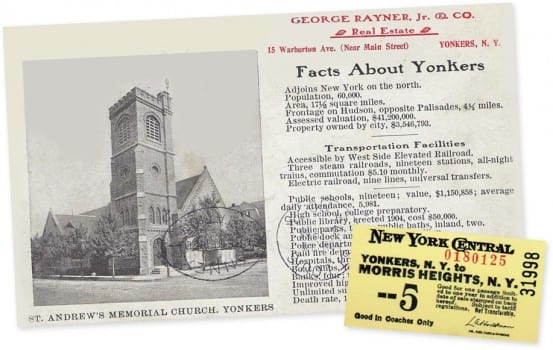
Postcard and ticket from Yonkers. The card lists various facts about Yonkers – like Yonkers having nineteen railroad stations.
The city of Yonkers is the fourth most populous in New York state, and the most populous city in Westchester county. Reflecting that population, Yonkers was historically well-connected to the city and beyond via multiple methods of transportation. Right near the station were steamboats and ferries, various streetcars, and the Getty Square branch of Putnam Division was not far away. At one time, Yonkers had nineteen railroad stations. Today there are far fewer than nineteen stations, the streetcars are long gone, and the Putnam Division is just a memory. However, Yonkers still has quite a few connections to the city via Metro-North – Ludlow, Glenwood, and Greystone are all in Yonkers. And the primary Yonkers station, which we are visiting today, is serviced by both Metro-North and Amtrak.
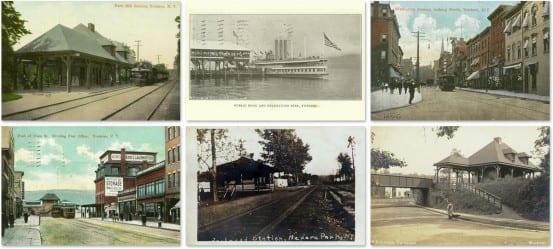
Some of the now defunct methods of transportation in Yonkers – including trolleys and a few Putnam Division stations. Postcards from the collection of the awesome postcard master, Steve Swirsky.
Other than being beautiful stations, Grand Central Terminal, Poughkeepsie, and Yonkers do have one thing in common – all were worked on by architects Warren and Wetmore. Built in their signature Beaux Arts style, the station was completed in 1911. The Gustavino tiling on the ceiling of Yonkers significantly resembles the portion of Grand Central adjacent to the Oyster Bar. One of my favorite portions of the station is the sculpted detail work containing NYC – for the New York Central. The station still has the original ticket windows, which are quite attractive, but they are no longer in use. All ticketing at Yonkers is through Ticket Vending Machines.
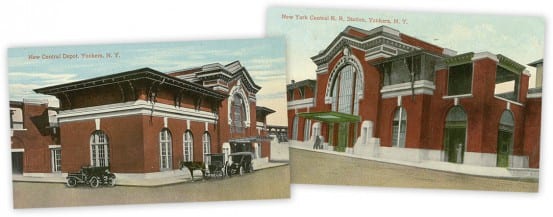
Postcards of Yonkers station, from the collection of Steve Swirsky
Expectedly, Yonkers station fell into disrepair over many years. It was ultimately restored by Metro-North in 2001. $45 million was alloted for the work at Yonkers, $4.5 million of which was for restoring the building itself. The sculpted terra cotta on the façade of the building was restored, or in some instances, replaced by a company from California. The rest of the money was used for track work, reconstruction of steel bridges, and refurbishment of the viaduct. Platforms were also redone, the lighting improved, and accommodations made for the disabled. In 2006 an Arts for Transit piece was added at Yonkers, but I happened to miss it on my visit.
Occurring simultaneously were other initiatives to renew the waterfront area surrounding the train station in Yonkers. One such effort was the Hudson Park luxury apartments, which you can spot in the background of several of my photographs of the station. Its proximity to the train station no doubt makes it an attractive place to live, and you’ll notice many developments similar to this up and down the line.
Compared to the beautiful station, the platform area of Yonkers station is relatively underwhelming. But it is, of course, from the platform that one accesses the frequent trains heading south to the city, or north to Poughkeepsie and beyond. Yonkers is just over 14 miles from Grand Central, a ride that takes on average 30 minutes. 26 daily Amtrak trains make stops at Yonkers, and there are Metro-North trains every half hour, if not more frequently.
That is about all I have for Yonkers today. Next week we will visit another Hudson Line station, but I can’t promise it will be quite as beautiful as this one. ;)


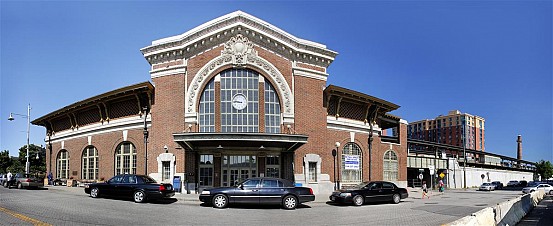
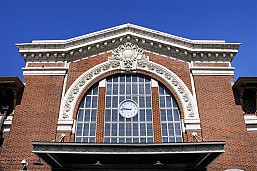
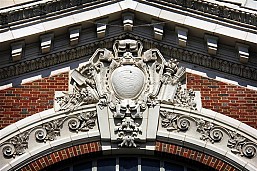
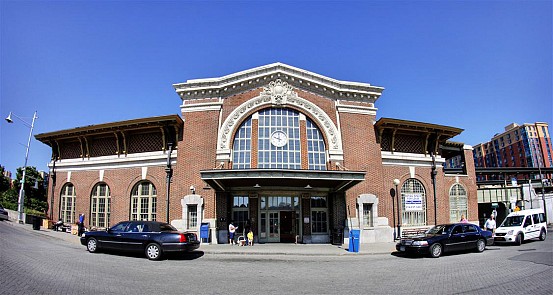
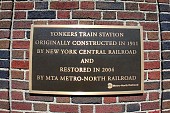

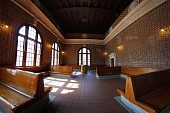
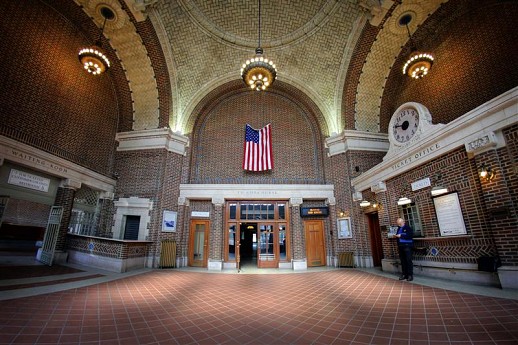
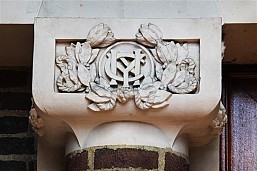
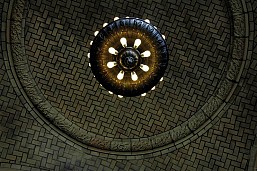
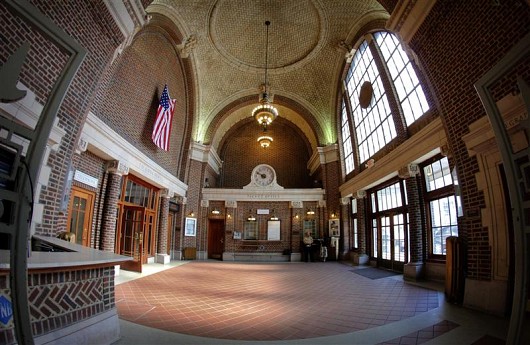

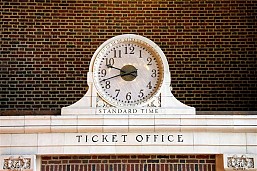
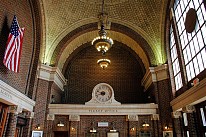
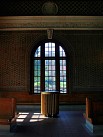
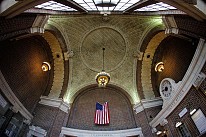
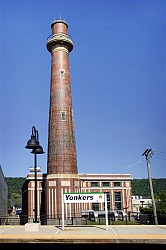
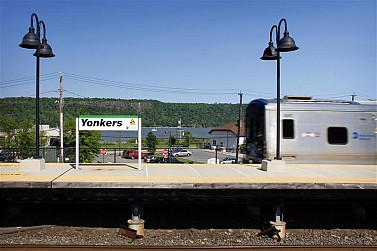
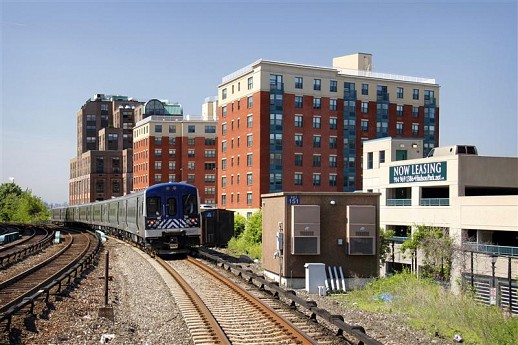
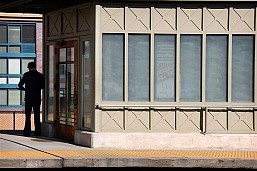
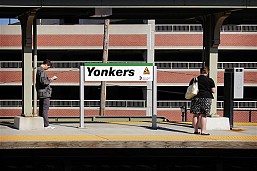
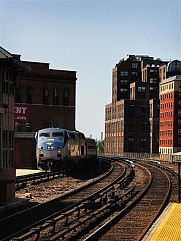
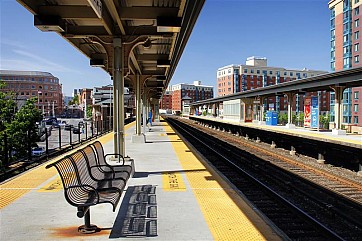
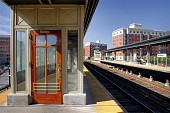
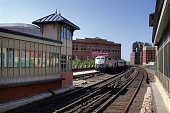
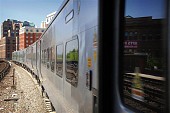
Fantastic coverage of Yonkers. The 19 station quote is pretty accurate when you consider the Getty Square branch, the Putnam division, the Hudson Division all had many stops in the large confines of Yonkers. Right next to the station is the old Third Avenue Railway car barn converted to apartments. Check out the Travel Channel show off limits http://www.travelchannel.com/tv-shows/off-limits
That has a nice surprise under Yonkers practically right next to the station…..
Hi CG;
I mentioned my friend Tom Panettiere who authored the book “Railroads over time; Metro-North’s Hudson Line—–” You will find an ad for this book in the bottom-right corner of page 7 of the July 2012 issue “Railfan & Railroad” magazine which includes Otto’s article on the W & B .
The rail-lines of the IRT subway, the LIRR , the NH , and the NYC were electrified circa 1903- 1907 , a period when transportation companies had to provide their own power. I aquired a 1905 (?) issue of the “Street Railway Journal” which includes an article on the construction of the NYC’s Glenwood Power Station in Yonkers which was the power-source for the NYC’s Hudson Line electrification.
The NYC also erected a power-generating plant for the Harlem Line at Port Morris in the Bronx , adjacent to the tracks of the NH’s Harlem River Branch.
Please allow me to present myself as the “historical expert” on the NH’s Cos Cob Power Plant.
Awesome, thanks! I’ll have to get that book!
This should be an interesting response. I know you’ve got several months to go on the Hudson Line tour, however, what are you going to do after? You’ll have drained all the lines pardoning a bunch of closed stations, which I think would be impressive after the fact.
That is a good question… I’m not too sure, actually!
THere is the abandoned Mt. St. Vincent (W. 261st Street) on the Hudson, along with Crugers, Montrose, Oscawanna, Chelsea stations. The Harlem is also loaded with Morrisania, Mott Haven, etc. You also have Holland Avenue in White Plains. Plus, if you need, can always do the rest of the Harlem north of Wassaic if not already done. :)
Most of the Upper Harlem stations that still have stuff to look at I’ve done. Even managed to get a tour of the old Sharon station. Re-doing the whole Harlem Line might be a possibility… the quality of the posts and photos I did back then, compared to now is a big difference.
Wouldn’t it kind of be redundant? :( – Also, you have SLE if you wanted.
There is always the “Tuesday Tour of the North Jersey Coast Line, Or Tuesday Tour of the Babylon branch….” Just Saying… If you really wanted to go nuts “Tuesday Tour of the SEPTA R2 Regional Rail Line” LOL
Keep up the great work!
Love the pictures of the Yonkers Station House. Fantastic ceilling and chandalier.
Al Brecken, You are a great friend! Thanks for plugging the book.
Emily, You have a wonderful website!